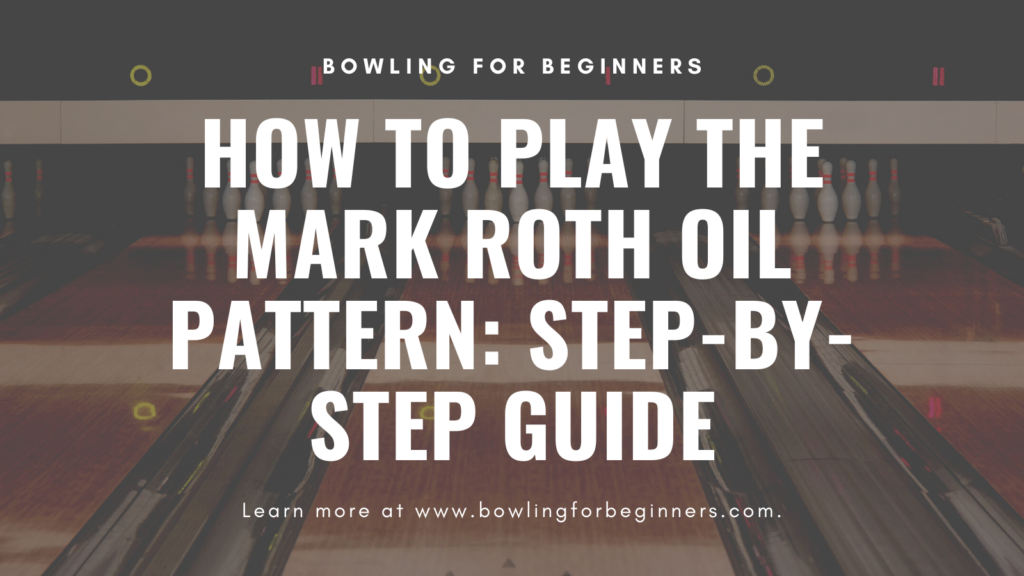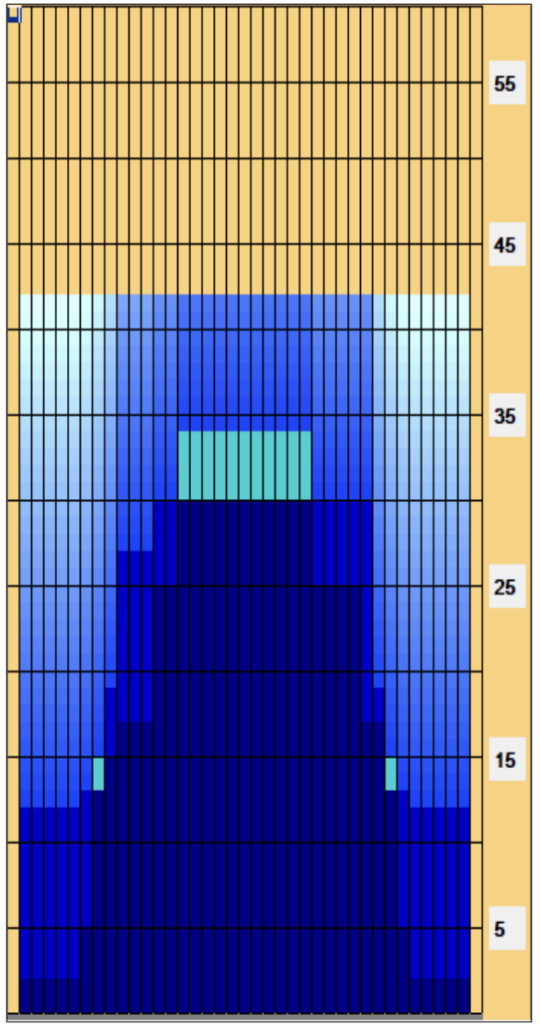
Oil patterns throw many bowling newbies off - the topic is extremely loaded. But it's worthwhile to learn all you can about them, even if you've just started dabbling in the sport. Today, we'll take a good, hard look at the Mark Roth oil pattern.
We'll delve into how the pattern is structured, how it affects your game, and much more! Understanding the Mark Roth oil pattern will be near impossible without a basic understanding of oil patterns in general. So, what are they?
Oil patterns are the lane conditions that dictate how the bowling ball will move post-release. They involve slathering the lane in oil based on a given pattern. Some bowling patterns are geared toward bowlers who prefer hooking, while others are designed to allow for a straighter shot.
No two oil patterns are the same - they vary in length, shape, and oil composition. But they usually incorporate some combination of forward oil and reverse oil. Forward oil refers to when the lane oiling machine applies the oil going from the foul line to the pins.
Conversely, reverse oil is when the machine goes from the pins back to the foul line. The goal of an oil pattern is to create a consistent shot for all bowlers, regardless of style. This ensures that no one has an unfair advantage (or disadvantage).
Contents
Mark Roth Oil Pattern- What Is It
The Mark Roth oil pattern is named after the late, great Mark Roth - one of the most successful bowlers of all time and the 5th greatest bowler in history.
He won 34 PBA titles and was inducted into the PBA Hall of Fame and USBC Hall of Fame in 1987 and 2009, respectively.
Throughout his career, Roth inspired countless bowlers to strive for greatness. The Mark Roth is considered a medium-length pattern at 42 feet long. It uses 27.9 ml of oil, with 15.35 ml of forward oil and 12.55 ml reverse oil.
The pattern itself is comprised of combined oil (forward and reverse oil) up the middle of the lane until the 30-foot mark, with reverse oil on the sides from the foul line until the 12-foot mark. There's also a bit of forward oil in the middle of the lane from the 30-35 - foot mark. Need a visual? Check out this diagram of the Mark Roth pattern.

How the Mark Roth Pattern Plays
The Mark Roth oil pattern is oil-heavy at the start of the lane, which means that the ball will have minimal traction and won't hook very much. This is good for straight bowlers who prefer to aim for the headpin.
But it can throw off those who like to hook the ball, as they could see diminished hooking potential. In addition, since there's not much oil along the gutters, there's an elevated risk of your ball going into the gutter before reaching the pins. So, you'll need to pay close attention to your form and ensure you're not throwing the ball too wide.
The good news is that, as the Mark Roth pattern progresses, it becomes increasingly more forgiving. The ball will start to hook more as it moves down the lane, giving bowlers more options for how they want to play the game.
It's incredibly important to be able to switch up your tactics as needs dictate. What works at the start of the lane might not work at the end, and vice versa. Adaptation is what separates good bowlers from great ones.
If you notice that your normal stance and throw aren't working with the Mark Roth pattern, don't be afraid to experiment until you find something that works.
The Benefits and Drawbacks of the Mark Roth Oil Pattern
Like anything else, the Mark Roth oil pattern has pros and cons.
Pros
The benefits of the Mark Roth include:
- It's a very versatile pattern that bowlers of all styles can use.
- As the oil wears down, you'll be able to hook the ball more, giving you more strategic leverage.
- It's a good pattern for straight bowlers. So, if this is your preferred style, you won't have much of an issue with it.
Cons
The drawbacks of Mark Roth include:
- There's a higher risk of going into the gutter, especially at the beginning of the lane.
- The ball might not hook as much as you want it to, depending on your bowling style.
- Some bowlers find the pattern too forgiving.
Ultimately, it's up to you to decide whether the Mark Roth oil pattern is right for you. But if you're looking for a versatile pattern that will give you a good mix of strategic options, the Mark Roth is definitely worth considering.

Should Beginners Bowl on the Mark Roth Oil Pattern?
The Mark Roth oil pattern is a great option for beginner bowlers. It's versatile enough to accommodate different bowling styles, including straight bowling. This makes it a good choice for bowlers who are just starting and want to improve their game.
But if you're a perfectionist who'll only be satisfied with a perfect game, a house shot oil pattern or another more forgiving pattern will suit you better.
One thing to keep in mind is that the Mark Roth oil pattern can help you refine your skills and take your game to the next level. So, if you're willing to put in the work, the Mark Roth oil pattern can increase your bowling skills.

Best Bowling Ball for the Mark Roth Oil Pattern
When it comes to bowling balls for this particular pattern, you have two main options to start with: reactive resin and polyurethane. Go with reactive resin if you're looking for more hook potential and polyurethane if you're a straight bowler.
The right bowling ball will depend on your bowling style and preferences. And if you don't have your own ball, that's okay. You can try your hand with a house ball and see how you do.
Just be careful not to use a ball that's too aggressive - it may find its way into the gutter more often than you'd like.
Where to Play on the Mark Roth
Want to give the Mark Roth oil pattern a try? You can find it at many bowling alleys across the country. Just ask your local alley if they have it available, and they'll be able to tell you with certainty.
Don't just waltz into a random bowling alley and expect them to have lanes oiled in the Mark Roth oil pattern - not all of them do. Some bowling alleys don't have the equipment to oil their lanes in this specific pattern, so it's always best to call ahead and ask.

Related Articles
And that's everything you need to know about the Mark Roth oil pattern! Now get out there and give it a try. With a little practice, you'll be bowling like a pro in no time.
Know that every oil pattern can be overcome with some dedication and time. So, if you're struggling on the Mark Roth, don't get discouraged. You'll eventually find your groove, and you might even come to prefer it over other patterns.
We hope that this article has been helpful to you as you learn about the oil patterns out there. Good luck and have fun!
Kira Byrd, a Certified Fraud Examiner, holds a B.S. in Accounting from the University of Alabama at Birmingham. With a passion for bowling from her childhood, Kira has poured her expertise and personal experiences into creating and nurturing Bowling For Beginners. Kira's mission is to meet new bowlers where they are and guide them toward consistently achieving higher scores. With a focus on skill development and strategic techniques, she empowers readers to take control of their game and unlock their true potential.
Bowling For Beginners embodies strict editorial integrity, ensuring reliable and unbiased information. Kira's commitment to delivering valuable insights and practical strategies is reflected in every article. Here's an explanation of our editorial policy and how we get money.







